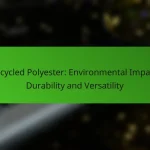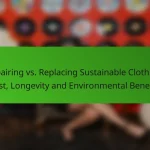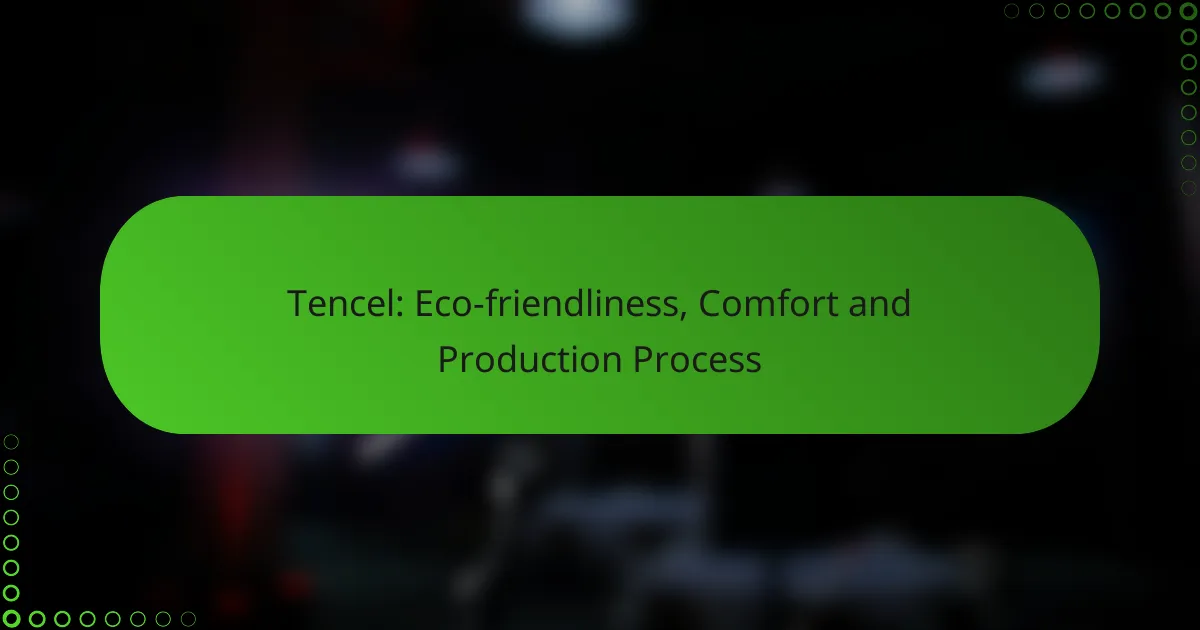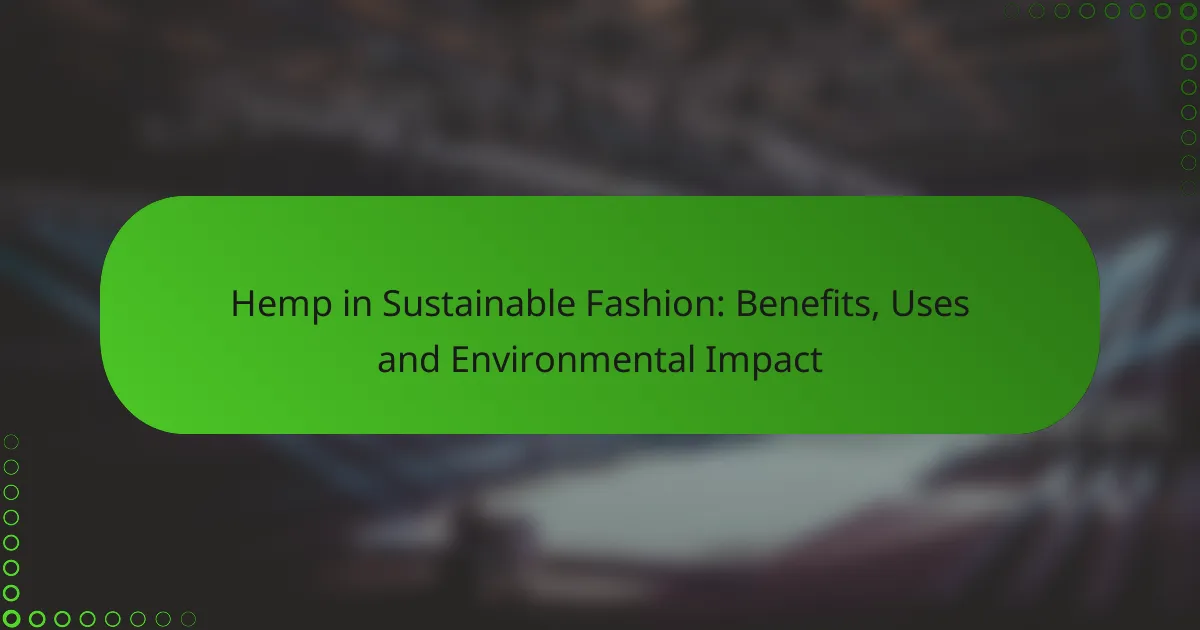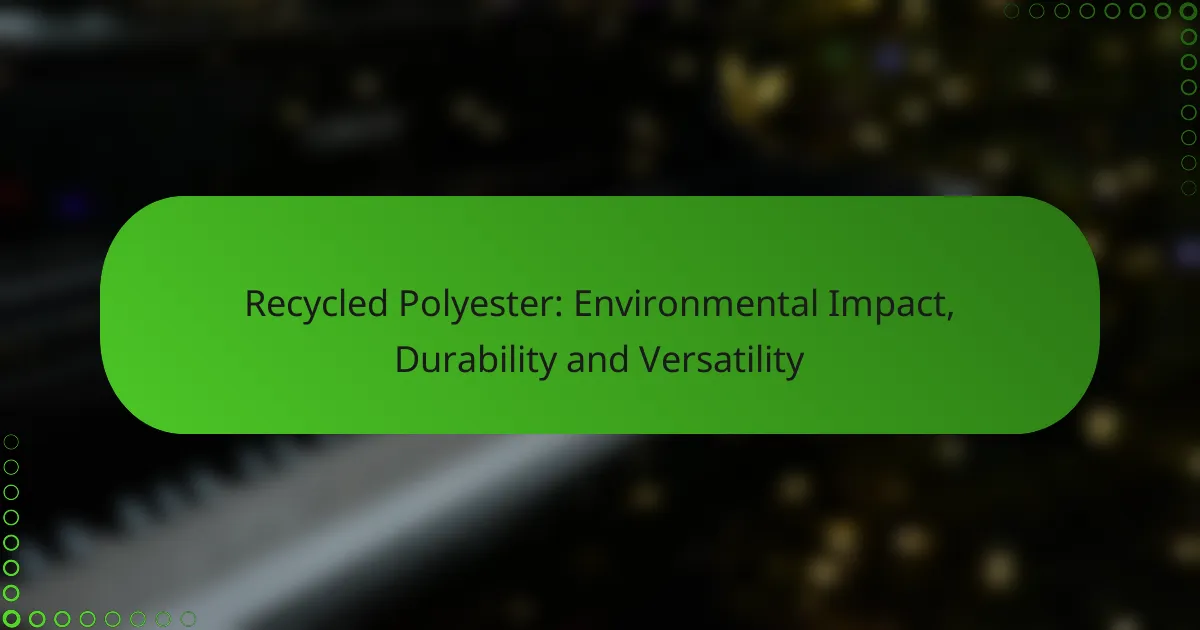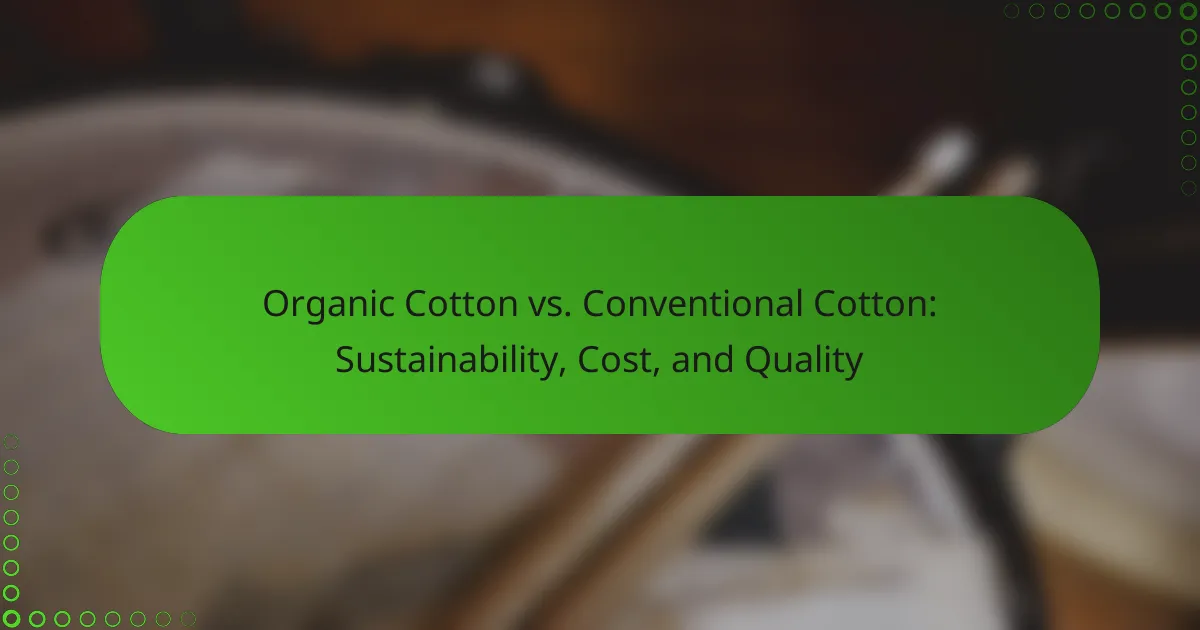Tencel is an eco-friendly fabric made from wood pulp sourced from responsibly managed forests, ensuring minimal environmental impact. Its sustainable production process utilizes a closed-loop system that recycles water and solvents, making it a more environmentally conscious choice. Additionally, Tencel is known for its exceptional comfort, offering moisture management, softness, and temperature regulation, which enhances its appeal for clothing and bedding.

How is Tencel eco-friendly?
Tencel is considered eco-friendly due to its sustainable production methods and biodegradable properties. It is made from wood pulp sourced from responsibly managed forests, ensuring minimal environmental impact.
Biodegradable properties
Tencel fibers are fully biodegradable, breaking down naturally in soil within a few months. This characteristic reduces landfill waste and contributes to a circular economy, as the material can return to the earth without leaving harmful residues.
When discarded, Tencel decomposes without releasing toxic substances, making it a safer choice for the environment compared to synthetic fibers that can persist for decades.
Closed-loop production process
The production of Tencel utilizes a closed-loop process that recycles water and solvents, minimizing waste and pollution. Approximately 99% of the solvents used in the process are captured and reused, significantly reducing the environmental footprint.
This method not only conserves resources but also adheres to strict environmental regulations, making Tencel a responsible choice for eco-conscious consumers.
Renewable wood sources
Tencel is derived from wood pulp sourced from sustainably managed forests, ensuring that the raw materials are renewable. The forests are typically certified by organizations like the Forest Stewardship Council (FSC), which guarantees responsible forestry practices.
By using renewable wood sources, Tencel supports biodiversity and helps combat deforestation, contributing to a healthier planet. This sustainable sourcing is a key factor in its eco-friendly reputation.

What are the comfort benefits of Tencel?
Tencel offers several comfort benefits, making it a popular choice for clothing and bedding. Its unique properties provide moisture management, softness, and temperature regulation, enhancing overall wearability and comfort.
Moisture-wicking capabilities
Tencel fibers excel at moisture-wicking, effectively drawing sweat away from the skin. This capability helps keep the body dry and comfortable, especially during physical activities or in warm climates. The fibers can absorb moisture up to 50% more than cotton, making them ideal for activewear and sleepwear.
When selecting Tencel products, look for those labeled as moisture-wicking to ensure optimal performance. This feature is particularly beneficial for individuals who experience night sweats or engage in high-intensity workouts.
Softness and breathability
One of the standout features of Tencel is its exceptional softness, which feels gentle against the skin. This softness is due to the fiber’s smooth surface, which reduces friction and irritation. As a result, Tencel is often recommended for sensitive skin or for those seeking ultimate comfort in their clothing.
In addition to softness, Tencel is highly breathable, allowing air circulation that helps regulate body temperature. This breathability makes it suitable for year-round wear, as it keeps you cool in the summer and warm in the winter.
Temperature regulation
Tencel’s ability to regulate temperature is another significant comfort benefit. The fibers respond to changes in body temperature and humidity, helping to maintain a balanced microclimate. This feature is particularly advantageous for bedding, as it can enhance sleep quality by preventing overheating.
For optimal temperature regulation, consider Tencel products for both clothing and home textiles. Items like sheets and pajamas made from Tencel can contribute to a more restful sleep environment, making them a worthwhile investment for comfort-focused consumers.

How is Tencel produced?
Tencel is produced through a sustainable process that transforms wood pulp into fibers using a closed-loop system. This method minimizes environmental impact by recycling water and solvents, making Tencel a more eco-friendly textile option.
Wood sourcing and processing
The production of Tencel begins with the sourcing of wood, primarily from sustainably managed forests. These forests are certified by organizations such as the Forest Stewardship Council (FSC), ensuring responsible logging practices that protect biodiversity and ecosystems.
Once harvested, the wood is processed into wood chips, which are then transformed into pulp. This pulp serves as the raw material for fiber production, and the entire process is designed to minimize waste and energy consumption.
Fiber extraction methods
Fiber extraction for Tencel involves dissolving the wood pulp in a non-toxic solvent, typically amine oxide, which is part of a closed-loop system. This means that the solvent is recycled and reused, significantly reducing harmful emissions and waste.
The resulting solution is then extruded through spinnerets to form fibers. These fibers are subsequently washed and dried, resulting in the soft, breathable material known for its comfort and moisture-wicking properties.
Manufacturing standards
Tencel production adheres to strict environmental and safety standards, including the EU Ecolabel and OEKO-TEX certification. These certifications ensure that the fibers are produced with minimal environmental impact and are free from harmful substances.
Manufacturers are also encouraged to implement best practices in water and energy management, further enhancing the sustainability of Tencel. By choosing Tencel, consumers support a textile that aligns with eco-conscious values while enjoying high-quality comfort.

What are the applications of Tencel in textiles?
Tencel is widely used in textiles for its eco-friendliness, comfort, and versatility. It is found in various products, ranging from fashion apparel to home textiles and activewear, making it a popular choice among manufacturers and consumers alike.
Fashion apparel
Tencel is increasingly incorporated into fashion apparel due to its soft texture and breathability. It drapes well, making it ideal for dresses, blouses, and casual wear. The fabric’s moisture-wicking properties help keep the wearer comfortable, especially in warmer climates.
When choosing Tencel clothing, look for blends with other fibers like cotton or wool for enhanced durability and style. Brands often highlight Tencel in their eco-friendly lines, appealing to environmentally conscious consumers.
Home textiles
In home textiles, Tencel is used for bed linens, curtains, and upholstery, offering a luxurious feel and elegant appearance. Its natural fibers are hypoallergenic and resistant to dust mites, making it suitable for sensitive individuals.
Consider Tencel sheets for their breathability and moisture management, which contribute to a comfortable sleep environment. Additionally, Tencel curtains can help regulate indoor temperatures while providing a stylish touch to any room.
Activewear
Tencel is a popular choice for activewear due to its lightweight nature and ability to wick moisture away from the body. This makes it suitable for sportswear, yoga pants, and workout tops, enhancing comfort during physical activities.
When selecting Tencel activewear, look for garments that combine Tencel with synthetic fibers for added stretch and durability. This blend can improve performance while maintaining the eco-friendly benefits of Tencel.

What are the environmental impacts of Tencel production?
Tencel production has several environmental impacts, primarily related to water usage, carbon emissions, and waste management. The process is designed to be more sustainable compared to traditional textile manufacturing, but it still has areas that require attention.
Water usage reduction
Tencel production significantly reduces water usage compared to conventional cotton farming. The closed-loop process recycles water, minimizing waste and lowering the overall demand for freshwater resources. This approach can lead to reductions in water consumption by up to 90% in some cases.
For instance, while cotton can require thousands of liters of water per kilogram, Tencel’s production process uses a fraction of that, making it a more sustainable choice for water conservation.
Carbon footprint analysis
The carbon footprint of Tencel is generally lower than that of many synthetic fibers and traditional textiles. The production process emits fewer greenhouse gases due to the use of renewable energy sources and efficient manufacturing techniques. Estimates suggest that Tencel can have a carbon footprint that is significantly lower than that of polyester or conventional cotton.
By utilizing sustainable forestry practices and reducing reliance on fossil fuels, Tencel contributes to a greener textile industry, aligning with global efforts to combat climate change.
Waste management practices
Tencel production employs effective waste management practices, including the recycling of solvents used in the manufacturing process. This closed-loop system ensures that harmful chemicals are not released into the environment, promoting a cleaner production cycle.
Additionally, any waste generated during production is often repurposed or recycled, further minimizing the environmental impact. This commitment to sustainability is reflected in the adherence to standards such as the EU Ecolabel, which certifies eco-friendly practices.

How does Tencel compare to other fabrics?
Tencel is often regarded as a more eco-friendly and comfortable alternative to many traditional fabrics. Its production process and properties set it apart, especially when compared to widely used materials like cotton and polyester.
Comparison with cotton
Tencel and cotton both offer breathability and softness, but Tencel typically excels in moisture management and durability. While cotton can absorb moisture, Tencel wicks it away, making it a better choice for active wear and bedding.
In terms of environmental impact, Tencel is produced from sustainably sourced wood pulp using a closed-loop process that recycles water and solvents. In contrast, conventional cotton farming often requires significant water and pesticide use, raising sustainability concerns.
When considering comfort, Tencel’s smooth texture reduces friction against the skin, which can be beneficial for sensitive skin types. Cotton, while soft, may not provide the same level of comfort in humid conditions due to its moisture retention properties.




